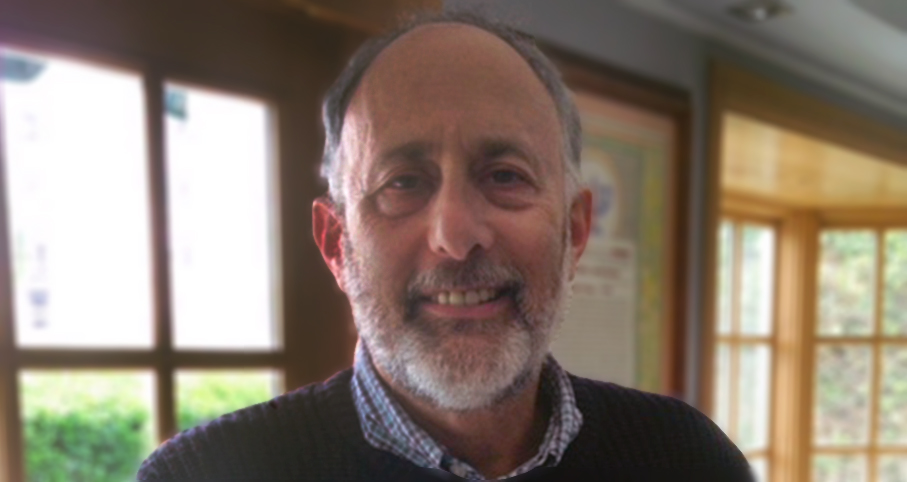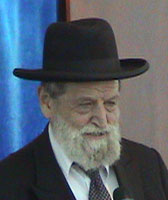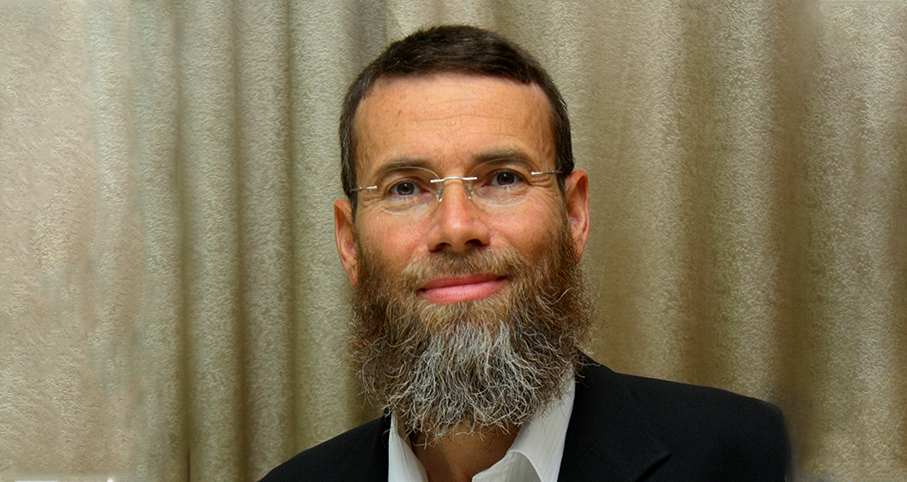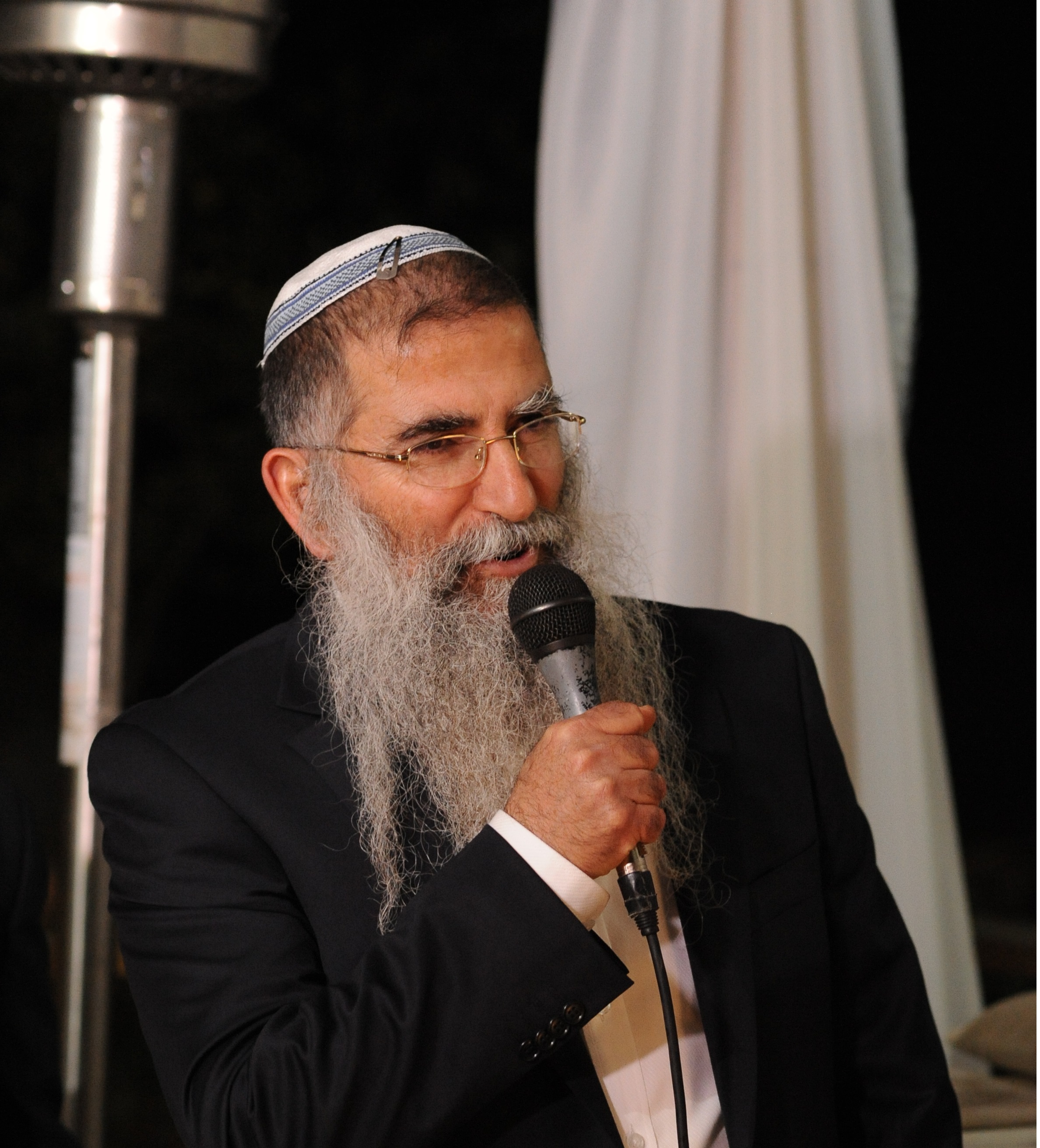Beit Midrash
- Shabbat and Holidays
- Yom Kippur
- The Essence of Yom Kippur
Translated and adapted by Hillel Fendel
Why does Yom Kippur atone for Israel's sins? The secret is rooted in the "covenant of love" between G-d and His people Israel. It started with the covenant He forged with the Patriarchs Avraham, Yitzchak, and Yaakov; it was strengthened at the Exodus from Egypt, and was signed and sealed with the giving of the Torah to Israel at Mt. Sinai. Precisely then, however, Israel sinned with the Golden Calf – and when the first Yom Kippur arrived, G-d forgave them totally, and gave them the Torah again with the Second Tablets.
G-d also commanded then that we build the Tabernacle in which the Divine Presence would dwell in their midst. We were also charged with observing the special Yom Kippur atonement service every year, the "love covenant" between G-d and Israel, by which Israel's sins are atoned for.
Unconditional Love
This covenant is independent of external circumstances, and does not change based on our good deeds or sins. It is solely based on the Divine Choice of Israel as His treasured Nation – am segulah. He created a special soul for Israel that strives for the rectification of the world (tikun olam) by its revelation of the Divine Light. As is written: "You are a holy nation to your Hashem, your G-d, and He chose you as His treasured nation" (Deut. 7,6).
The world generally operates according to rules of judgement, reward and punishment, as G-d determined when He created the world. This should ostensibly mean that too many sins would lead to destruction – but actually, on Yom Kippur the gates of Heaven open, revealing the Upper Divine Providence, and Israel's sins are forgiven from their roots. As is written: "For on this day He will atone for you, to purify you from all your sins; before G-d you will be pure" (Lev. 16,30). The rules of judgement still apply, however, and every sin not rectified via teshuvah (repentance) will still lead to punishment. The promised Redemption will certainly arrive, but sins will cause it to happen with difficulty and suffering. The more we choose good and return to the ways of G-d, the more we will merit, via the sanctity of Yom Kippur, to bring the Redemption closer and with more blessing.
The Temple atonement service of Yom Kippur featured two goats: One was for G-d, and one was sent to Azazel. Fascinatingly, the second one atoned for almost all of Israel's sins, while the offering to G-d specifically atoned for Israel's sins in the Holy Temple. As if that wasn't enough, the High Priest would offer a special sin-offering to atone for the Priests' sins in the Temple. Why was such seemingly disproportionate attention paid to the sins in the Beit HaMikdash?
A very important concept is illustrated here: The root of all sin stems from a fault in our connection with the values of sanctity and holiness. This is why the primary aspects of atonement come to rectify our approach to the values of the Beit HaMikdash. After we make this adjustment, it turns out that all the other sins are external, and we can free ourselves of them with relative ease – as symbolized by the sending off of the second goat to destruction in Azazel.
Let us therefore review some of the values we learn from the Beit HaMikdash and its service. We will concentrate here not on the Table (symbolizing sustenance and work), the Menorah (wisdom), or the Altar (prayer), all of which stand in the area known as the Kodesh (Holy) – but rather on the values taught us by the items in the Holy of Holies.
What's in the Holy of Holies?
Within the Holy of Holies are placed the Ark of the Covenant, which contain the Tablets of the Law and the Torah [according to Rashi to Sh'mot 25,16]. Above the Ark was the golden kaporet [lid or covering] with the two cherubim – expressing the covenant of love between G-d and Israel, the root of all love in the world. We thus see that the values embodied in the Holy of Holies are the faith revealed by Israel's sanctity, the Torah, and love.
The first fundamental in revealing our faith is the sanctity of Israel and its very existence as G-d's nation. This is as we say in the Blessings of the Torah, that G-d "chose us from among all the nations and [thereby] gave us His Torah."
And Yom Kippur is the day of manifestation of the Holy of Holies - for no one is ever permitted to enter this area, other than the High Priest on this very day. Our Yom Kippur prayers are therefore recited in total unity, including all G-d's beloved children, including the "transgressors" whom we invite just before the Kol Nidrei prayer. We must therefore arouse ourselves on Yom Kippur to love every Jew, no matter what camp or sector he belongs to.
The second element is the Torah. Every Jew must find his connection to Torah particularly on this day; he must bond with the Torah with strength and enthusiasm, and take upon himself to study more Torah throughout the coming year. One must learn Torah especially on the Sabbath and Festival days, as the Jerusalem Talmud (Shabbat 15,3) teaches that this is the very purpose of these days.
And the third fundamental is Ahavat Israel, love of Israel – for Jewish faith means faith in G-d's oneness and singularity, the very expression of which is the love we have for G-d's creations. This is why R. Akiva taught: "Love your neighbor as yourself – this is a great principle of Torah" – for via the love between Jews, the Divine unity is revealed in miniature. As such, whoever realizes that he has harmed his fellow during the past year must seek to appease him as Yom Kippur approaches. In fact, the Mishna teaches (Yoma 85b): "Yom Kippur does not atone for sins between man and his fellow unless he appeases him."
Family Values in the Holy of Holies
The climax of love of Israel is manifest in the covenantal love relationship between man and wife. This is alluded to by the cherubim, facing each other atop the Ark in love (Bava Batra 99a), an indication that love between man and wife parallels the love between Hashem and Israel. As written in Isaiah (62,5): "… and the rejoicing of a bridegroom over a bride, [so] shall your God rejoice over you."
This helps us understand why, when the Beit HaMikdash stood, the end of the Yom Kippur service was when the maidens of Jerusalem would go out to the vineyards and find a husband (Mishna, Taanit 26b). After the High Priest entered the Holy of Holies, where we saw that the holiness of love and marriage is manifest, it was appropriate to strengthen the nation with betrothals of love and sanctity. As the Sages teach (Sotah 17a): When man and woman merit to live together in love and loyalty, the Divine Presence dwells in their midst.
Today, in light of the Temple's destruction, we do not feel worthy of engaging in betrothals on the holy Day of Atonement. But still, given the family significance of this day, it is appropriate for all singles to pray on this day for their "match" to arrive, and to repent of the various personality faults that might be delaying his/her arrival. For instance, often bad traits such as arrogance or lust prevent a person from finding his/her match.
The holy Yom Kippur is a day on which singles can view themselves more accurately and correctly. They can and should consider their true aspirations in life, and the partner who is truly worthy for them and with whom they can build a home of Torah, and together add joy and life.
Married couples, as well, should do teshuva on Yom Kippur for all the times they did not love and gladden each other as they should have. They should pray on this day that they merit to unite in love and happiness, that the Divine Presence should dwell in their home, and that they raise children who love Torah and wish to walk in its path.
In order to get articles like this delivered straight to your inbox every week, subscribe to the Israel National Torah newsletter here.
Why does Yom Kippur atone for Israel's sins? The secret is rooted in the "covenant of love" between G-d and His people Israel. It started with the covenant He forged with the Patriarchs Avraham, Yitzchak, and Yaakov; it was strengthened at the Exodus from Egypt, and was signed and sealed with the giving of the Torah to Israel at Mt. Sinai. Precisely then, however, Israel sinned with the Golden Calf – and when the first Yom Kippur arrived, G-d forgave them totally, and gave them the Torah again with the Second Tablets.
G-d also commanded then that we build the Tabernacle in which the Divine Presence would dwell in their midst. We were also charged with observing the special Yom Kippur atonement service every year, the "love covenant" between G-d and Israel, by which Israel's sins are atoned for.
Unconditional Love
This covenant is independent of external circumstances, and does not change based on our good deeds or sins. It is solely based on the Divine Choice of Israel as His treasured Nation – am segulah. He created a special soul for Israel that strives for the rectification of the world (tikun olam) by its revelation of the Divine Light. As is written: "You are a holy nation to your Hashem, your G-d, and He chose you as His treasured nation" (Deut. 7,6).
The world generally operates according to rules of judgement, reward and punishment, as G-d determined when He created the world. This should ostensibly mean that too many sins would lead to destruction – but actually, on Yom Kippur the gates of Heaven open, revealing the Upper Divine Providence, and Israel's sins are forgiven from their roots. As is written: "For on this day He will atone for you, to purify you from all your sins; before G-d you will be pure" (Lev. 16,30). The rules of judgement still apply, however, and every sin not rectified via teshuvah (repentance) will still lead to punishment. The promised Redemption will certainly arrive, but sins will cause it to happen with difficulty and suffering. The more we choose good and return to the ways of G-d, the more we will merit, via the sanctity of Yom Kippur, to bring the Redemption closer and with more blessing.
The Temple atonement service of Yom Kippur featured two goats: One was for G-d, and one was sent to Azazel. Fascinatingly, the second one atoned for almost all of Israel's sins, while the offering to G-d specifically atoned for Israel's sins in the Holy Temple. As if that wasn't enough, the High Priest would offer a special sin-offering to atone for the Priests' sins in the Temple. Why was such seemingly disproportionate attention paid to the sins in the Beit HaMikdash?
A very important concept is illustrated here: The root of all sin stems from a fault in our connection with the values of sanctity and holiness. This is why the primary aspects of atonement come to rectify our approach to the values of the Beit HaMikdash. After we make this adjustment, it turns out that all the other sins are external, and we can free ourselves of them with relative ease – as symbolized by the sending off of the second goat to destruction in Azazel.
Let us therefore review some of the values we learn from the Beit HaMikdash and its service. We will concentrate here not on the Table (symbolizing sustenance and work), the Menorah (wisdom), or the Altar (prayer), all of which stand in the area known as the Kodesh (Holy) – but rather on the values taught us by the items in the Holy of Holies.
What's in the Holy of Holies?
Within the Holy of Holies are placed the Ark of the Covenant, which contain the Tablets of the Law and the Torah [according to Rashi to Sh'mot 25,16]. Above the Ark was the golden kaporet [lid or covering] with the two cherubim – expressing the covenant of love between G-d and Israel, the root of all love in the world. We thus see that the values embodied in the Holy of Holies are the faith revealed by Israel's sanctity, the Torah, and love.
The first fundamental in revealing our faith is the sanctity of Israel and its very existence as G-d's nation. This is as we say in the Blessings of the Torah, that G-d "chose us from among all the nations and [thereby] gave us His Torah."
And Yom Kippur is the day of manifestation of the Holy of Holies - for no one is ever permitted to enter this area, other than the High Priest on this very day. Our Yom Kippur prayers are therefore recited in total unity, including all G-d's beloved children, including the "transgressors" whom we invite just before the Kol Nidrei prayer. We must therefore arouse ourselves on Yom Kippur to love every Jew, no matter what camp or sector he belongs to.
The second element is the Torah. Every Jew must find his connection to Torah particularly on this day; he must bond with the Torah with strength and enthusiasm, and take upon himself to study more Torah throughout the coming year. One must learn Torah especially on the Sabbath and Festival days, as the Jerusalem Talmud (Shabbat 15,3) teaches that this is the very purpose of these days.
And the third fundamental is Ahavat Israel, love of Israel – for Jewish faith means faith in G-d's oneness and singularity, the very expression of which is the love we have for G-d's creations. This is why R. Akiva taught: "Love your neighbor as yourself – this is a great principle of Torah" – for via the love between Jews, the Divine unity is revealed in miniature. As such, whoever realizes that he has harmed his fellow during the past year must seek to appease him as Yom Kippur approaches. In fact, the Mishna teaches (Yoma 85b): "Yom Kippur does not atone for sins between man and his fellow unless he appeases him."
Family Values in the Holy of Holies
The climax of love of Israel is manifest in the covenantal love relationship between man and wife. This is alluded to by the cherubim, facing each other atop the Ark in love (Bava Batra 99a), an indication that love between man and wife parallels the love between Hashem and Israel. As written in Isaiah (62,5): "… and the rejoicing of a bridegroom over a bride, [so] shall your God rejoice over you."
This helps us understand why, when the Beit HaMikdash stood, the end of the Yom Kippur service was when the maidens of Jerusalem would go out to the vineyards and find a husband (Mishna, Taanit 26b). After the High Priest entered the Holy of Holies, where we saw that the holiness of love and marriage is manifest, it was appropriate to strengthen the nation with betrothals of love and sanctity. As the Sages teach (Sotah 17a): When man and woman merit to live together in love and loyalty, the Divine Presence dwells in their midst.
Today, in light of the Temple's destruction, we do not feel worthy of engaging in betrothals on the holy Day of Atonement. But still, given the family significance of this day, it is appropriate for all singles to pray on this day for their "match" to arrive, and to repent of the various personality faults that might be delaying his/her arrival. For instance, often bad traits such as arrogance or lust prevent a person from finding his/her match.
The holy Yom Kippur is a day on which singles can view themselves more accurately and correctly. They can and should consider their true aspirations in life, and the partner who is truly worthy for them and with whom they can build a home of Torah, and together add joy and life.
Married couples, as well, should do teshuva on Yom Kippur for all the times they did not love and gladden each other as they should have. They should pray on this day that they merit to unite in love and happiness, that the Divine Presence should dwell in their home, and that they raise children who love Torah and wish to walk in its path.
In order to get articles like this delivered straight to your inbox every week, subscribe to the Israel National Torah newsletter here.

Down to the Earth and Up to the Sky
Rabbi Shaul Yisraeli zt"l | Tishrei 4 5779

THIS YEAR'S YOM KIPPUR- Prayers for All Israel
Rabbi Ari Shvat | Tishrei 5786
Yom Kippur
Rabbi Berel Wein zt"l | Tishrei 3 5781



















